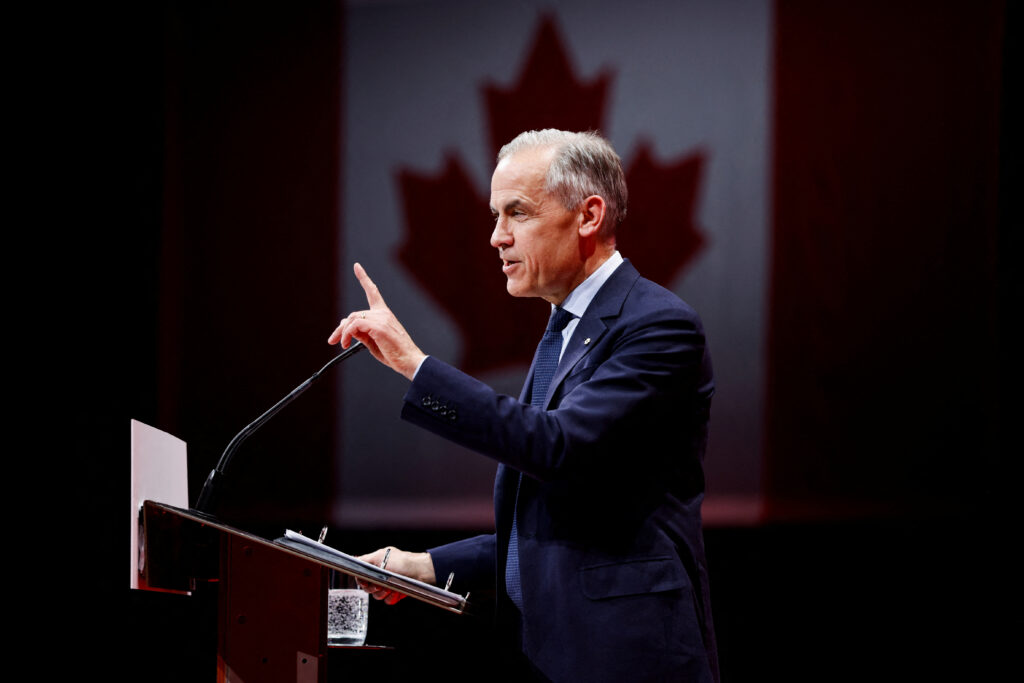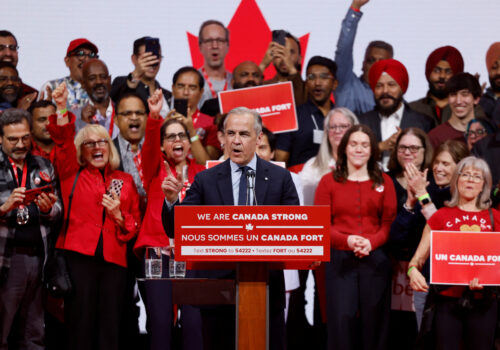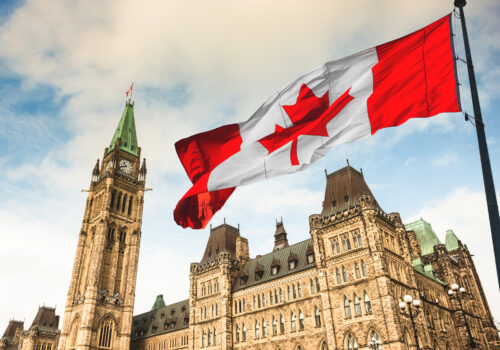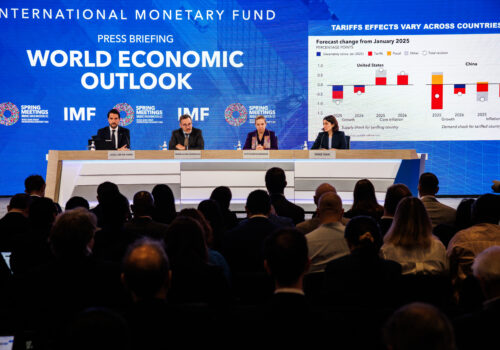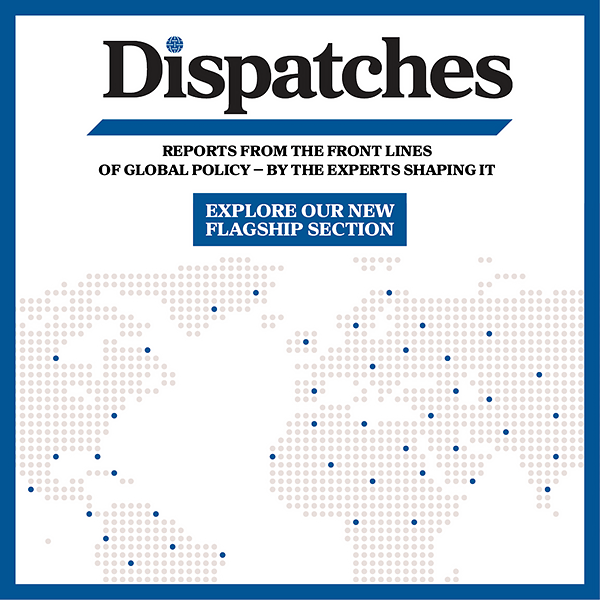In a country where national security and defense have rarely been major topics on the campaign trail, Canada’s April 28 election was an outlier. Prime Minister Mark Carney of the Liberal Party and his main opponent, the Conservative Party’s Pierre Poilievre, spoke often and in detail during the campaign about Canada’s national security and defense. Both promised, for example, to review Canada’s F-35 program with the United States, to increase Canadian military presence in the Arctic, and to ramp up defense spending.
It’s easy to see where this campaign focus on defense came from: Canada faces a growing number of threats to its security. But now that the election is over, it is imperative that Carney find a way to translate talking points into action and invest in strengthening Canadian security. Last year, Canada spent less than 1.4 percent of its gross domestic product (GDP) on defense. It should work to increase its spending to meet or exceed NATO’s target of allocating at least 2 percent of its GDP to defense. Moreover, the money should be spent wisely to support the capabilities, relationships, and regions that will be at the forefront of a changing world.
Carney’s plan to ramp up defense spending, released during the campaign, includes a pledge to increase spending by approximately $13 billion (USD) to meet the 2 percent NATO spending target over the next four years. The Liberals also pledged to buy new submarines, build or upgrade bases in the Arctic, and purchase new icebreakers.
With NATO allies expected to approve a higher target for defense spending at the upcoming NATO Summit in The Hague, Carney will have to move fast to pass a budget, sustain the momentum around foreign policy and defense that emerged during the campaign, and put Canada on the path to meeting its defense commitments.
The best way to do so is by focusing and investing in areas where Canada already has an advantage.
First, Carney should focus on Canada’s north. Strengthening Ottawa’s ability to defend and protect its Arctic can help demonstrate a lasting commitment to improving Canada’s national security and spur greater economic development across the region. During the campaign, the Liberal Party pledged hundreds of millions of dollars to boost Canada’s military presence in the Arctic and an additional five billion dollars to purchase an over-the-horizon radar system from Australia. The Conservatives announced plans to establish a permanent military base in the region, double the number of Canadian Rangers—who patrol the region—to four thousand, and commit to purchasing two new icebreakers. Both the Conservative and Liberal plans have strengths, and Carney should consider incorporating some of the opposition party’s ideas into his new government’s policies.
Second, Carney should expand Canada’s presence in Latin America and the Caribbean. The threat of China’s and Russia’s growing influence there and the rise of transnational criminal organizations demand a comprehensive Canadian response modeled after Ottawa’s Indo-Pacific Strategy. Canada should increase its naval presence in the Caribbean waters and along Pacific coastlines to counter illicit trafficking and foreign naval expansion. It should implement military capacity-building programs focused on disaster response and maritime security. To combat criminal organizations and foreign state interference, it should strengthen intelligence sharing with partners in the region. And it should establish cyber defense partnerships to protect critical regional infrastructure and democratic institutions from digital threats.
Canada offers unique advantages as a trusted actor in a region where US influence now faces challenges. The Tenth Summit of the Americas in the Dominican Republic, taking place in December of this year, presents an opportunity to unveil this strategy. By focusing on the Western Hemisphere as its immediate neighborhood, Canada can exercise regional leadership while advancing its foreign policy priorities.
Third, Carney will need to craft a new relationship with its southern neighbor.
“Our old relationship with the United States, a relationship based on steadily increasing integration, is over,” stated Carney on election night. He added, “the system of open global trade anchored by the United States, a system that Canada has relied on since the Second World War, a system that, while not perfect, has helped deliver prosperity for our country for decades, is over.”
While dramatic, Carney’s comments highlight a very real sentiment felt across Canada that has left Canadians and their leaders wondering what Ottawa’s future security partnerships will look like. This uncertainty has spurred Ottawa to deepen its partnerships with other countries, such as Australia, which recently sold an over-the-horizon radar system to Canada. Future partnerships with countries such as France and South Korea to share intelligence and purchase new platforms, respectively, are also promising.
At the same time, no matter the rhetoric, Canada will need to continue to work with the United States. The two nations still share a long border, close cultural and familial ties, and a shared responsibility to defend North America via the North American Aerospace Defense Command (NORAD). During Carney’s upcoming trip to Washington to meet with US President Donald Trump, listen for discussions on Canada’s potential participation in the US Golden Dome project, ways to advance North American energy security, and resolving disagreements over tariffs.
Carney and Poilievre were right to focus on national security and defense during the campaign. The hard part now is for Carney to put actions and resources behind his rhetoric. Doing so is essential as Canada faces a series of compounding threats to its security in an increasingly volatile world.
Imran Bayoumi is an associate director with the GeoStrategy Initiative in the Atlantic Council’s Scowcroft Center for Strategy and Security.
Maite Gonzalez Latorre is a program assistant at the Adrienne Arsht Latin America Center and Caribbean Initiative.
Further reading
Tue, Apr 29, 2025
Experts react: What the Liberal Party’s win in Canada means for the world
New Atlanticist By
Canadian Prime Minister Mark Carney’s party secured the most seats in Canada’s parliament in elections on April 28, marking a remarkable political turnaround.
Thu, Mar 27, 2025
Canada needs an economic statecraft strategy to address its vulnerabilities
Issue Brief By Kimberly Donovan, Maia Nikoladze, Lize de Kruijf
To address threats from Russia and China and reduce trade overdependence on the United States, Canada’s federal government will need to consolidate economic power and devise an economic statecraft strategy that will leverage Canada’s economic tools to mitigate economic threats and vulnerabilities.
Tue, Apr 22, 2025
Is the global economy headed for a reset, recession, or both?
Fast Thinking By
The International Monetary Fund has just released its latest World Economic Outlook. Atlantic Council experts dig into the details.
Image: Canada's Prime Minister Mark Carney gestures as a man's phone rings on stage while Carney speaks at the Liberal Party election night headquarters in Ottawa, Ontario, Canada April 29, 2025. REUTERS/Carlos Osorio
